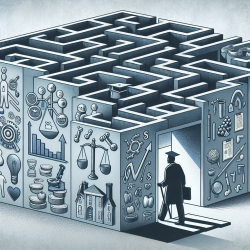Introduction
In the ever-evolving landscape of academic medicine, the dual responsibilities of teaching and clinical duties often weigh heavily on physicians. Recent research, titled "A survey-based study: assessing inpatient attending perspectives on teaching learners, feeling valued, and symptoms of burnout," sheds light on the challenges faced by academic physicians and offers insights into improving their professional fulfillment.
Understanding the Research
The study surveyed 54 attending physicians within an academic health system, focusing on their experiences and perceptions related to teaching effectiveness, feeling valued, and burnout symptoms. The results highlighted several key factors affecting these areas:
- Team size and admissions model impacted teaching effectiveness.
- Non-patient care obligations hindered teaching capabilities.
- Emotional exhaustion and depersonalization were prevalent among attendings.
- Feelings of reduced personal achievement were common.
Implications for Practitioners
For practitioners aiming to enhance their skills and improve outcomes for learners, the study offers valuable insights:
- Balance Clinical and Teaching Responsibilities: Physicians working a 50/50 split between inpatient and outpatient duties reported challenges in teaching effectiveness. Consider restructuring clinical responsibilities to allow more focused teaching time.
- Address Non-Patient Care Obligations: Administrative duties and research commitments can detract from teaching. Institutions should explore ways to minimize these distractions or provide dedicated time for teaching.
- Recognize and Value Contributions: Feeling undervalued by leadership was a significant issue. Implementing recognition programs and fostering a supportive environment can enhance job satisfaction and reduce burnout.
Strategies for Improvement
To combat burnout and improve teaching effectiveness, institutions and practitioners can consider the following strategies:
- Implement Flexible Scheduling: Allowing physicians to have input in their schedules can help balance work and personal life, reducing burnout.
- Provide Professional Development Opportunities: Offering training and development programs can enhance teaching skills and provide a sense of growth and achievement.
- Create a Supportive Work Environment: Encourage open communication and provide resources for stress management and mental health support.
Conclusion
The findings from this study underscore the importance of addressing the factors contributing to burnout and teaching challenges in academic medicine. By implementing targeted interventions and fostering a supportive work environment, institutions can enhance the professional fulfillment and wellbeing of their physicians, ultimately benefiting both educators and learners.
To read the original research paper, please follow this link: A survey-based study: assessing inpatient attending perspectives on teaching learners, feeling valued, and symptoms of burnout.










